Pollination
Pollination is a crucial process in the reproduction of flowering plants. It is the transfer of pollen from the male reproductive organ (anther) of a flower to the female reproductive organ (stigma) of the same flower or another flower of the same species.
Types of Pollination
- Self-pollination: Occurs when the pollen from the anther is transferred to the stigma of the same flower or another flower on the same plant.
- Cross-pollination: Involves the transfer of pollen from the anther of one flower to the stigma of a flower on a different plant of the same species.
Agents of Pollination
Several agents can facilitate the process of pollination:
- Wind: Some plants rely on the wind to carry their pollen to other flowers.
- Animals: Insects, birds, and other animals can carry pollen from one flower to another while they are foraging for nectar.
- Water: Aquatic plants use water to transport their pollen to other flowers.
Significance of Pollination
Pollination is essential for the production of fruits, seeds, and the continuation of plant species. It also contributes to the genetic diversity of plants.
Study Guide
Here are some key points to remember about pollination:
- Define pollination and its significance in plant reproduction.
- Describe the two types of pollination and provide examples of plants that use each type.
- Explain the role of different pollination agents (wind, animals, water) and give examples of plants that are pollinated by each agent.
- Discuss the importance of pollination in agriculture and ecosystem sustainability.
[Pollination] Related Worksheets and Study Guides:
.◂Science Worksheets and Study Guides Sixth Grade. Introduction to Animals
Study Guide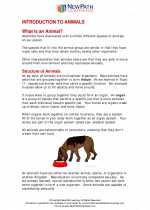 Introduction to Animals
Introduction to Animals  Activity Lesson
Activity Lesson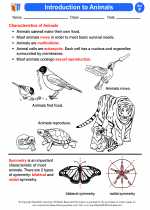 Introduction to Animals
Introduction to Animals  Worksheet/Answer key
Worksheet/Answer key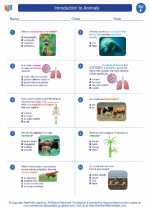 Introduction to Animals
Introduction to Animals  Worksheet/Answer key
Worksheet/Answer key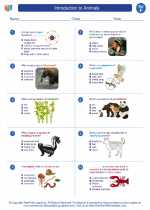 Introduction to Animals
Introduction to Animals  Worksheet/Answer key
Worksheet/Answer key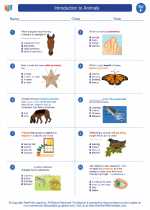 Introduction to Animals
Introduction to Animals  Vocabulary/Answer key
Vocabulary/Answer key Introduction to Animals
Introduction to Animals  Vocabulary/Answer key
Vocabulary/Answer key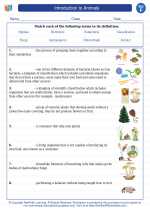 Introduction to Animals
Introduction to Animals  Vocabulary/Answer key
Vocabulary/Answer key Introduction to Animals
Introduction to Animals  Vocabulary/Answer key
Vocabulary/Answer key Introduction to Animals
Introduction to Animals 

 Activity Lesson
Activity Lesson
 Worksheet/Answer key
Worksheet/Answer key
 Worksheet/Answer key
Worksheet/Answer key
 Worksheet/Answer key
Worksheet/Answer key
 Vocabulary/Answer key
Vocabulary/Answer key
 Vocabulary/Answer key
Vocabulary/Answer key
 Vocabulary/Answer key
Vocabulary/Answer key
 Vocabulary/Answer key
Vocabulary/Answer key

The resources above cover the following skills:
LIFE SCIENCE
From Molecules to Organisms: Structures and Processes